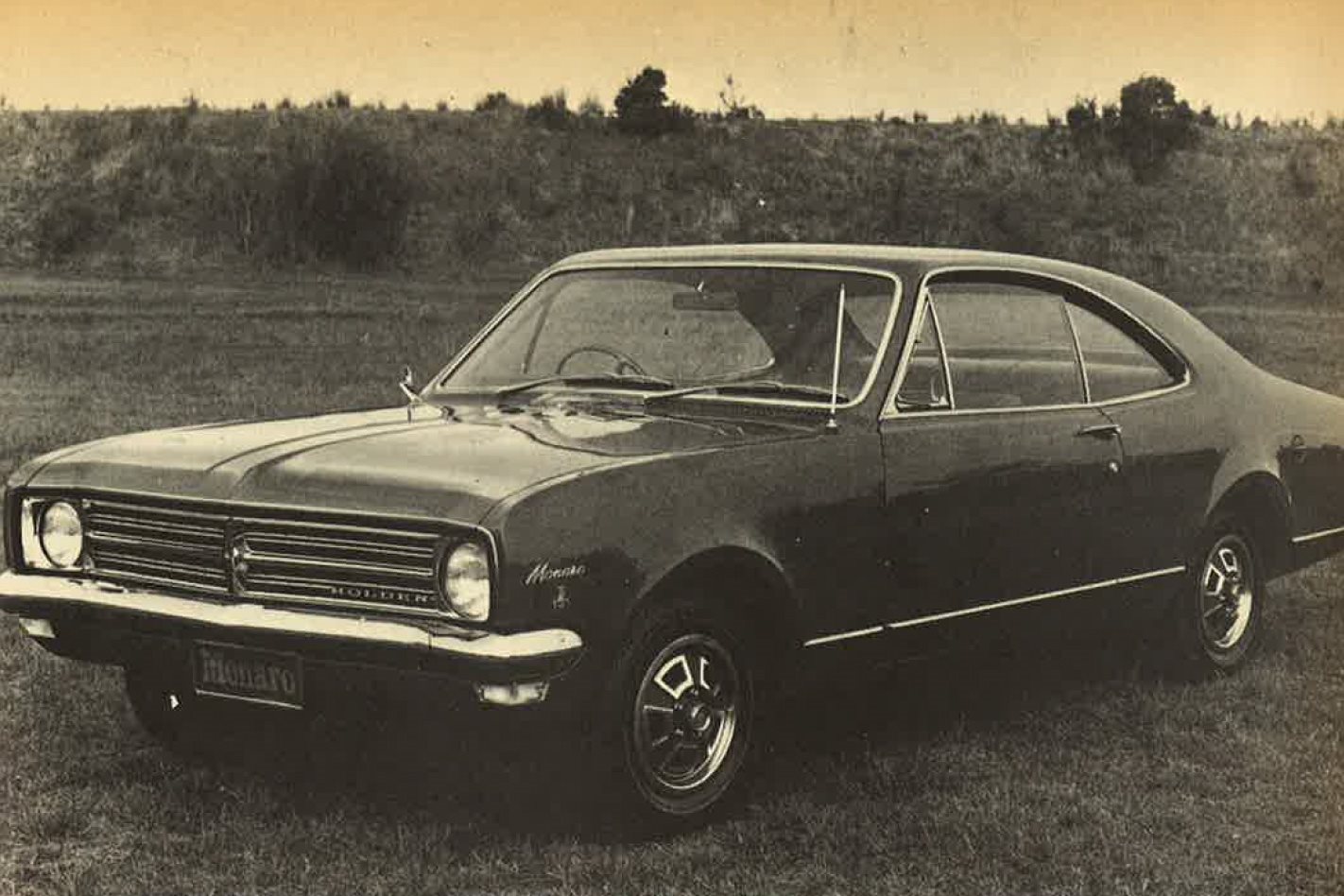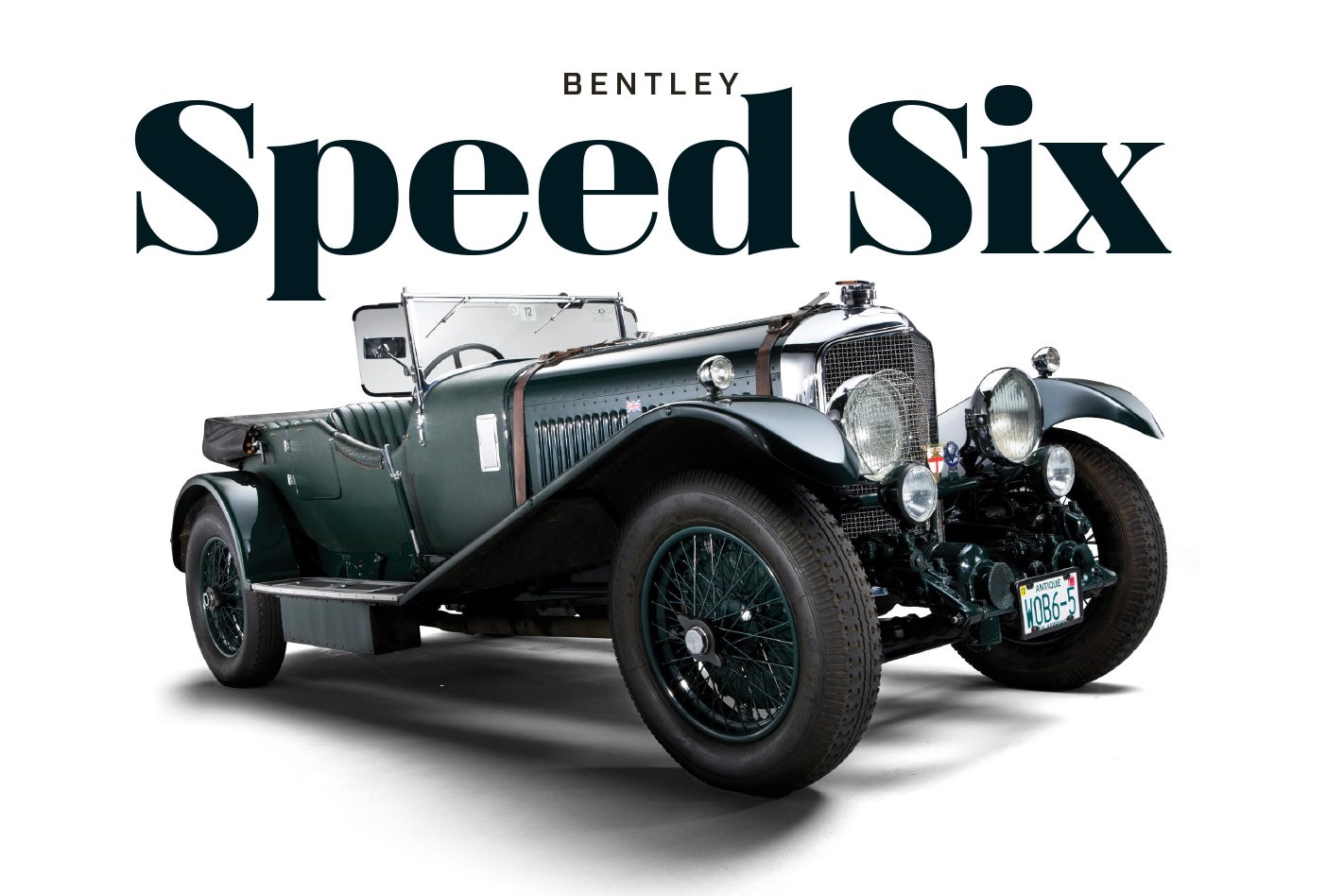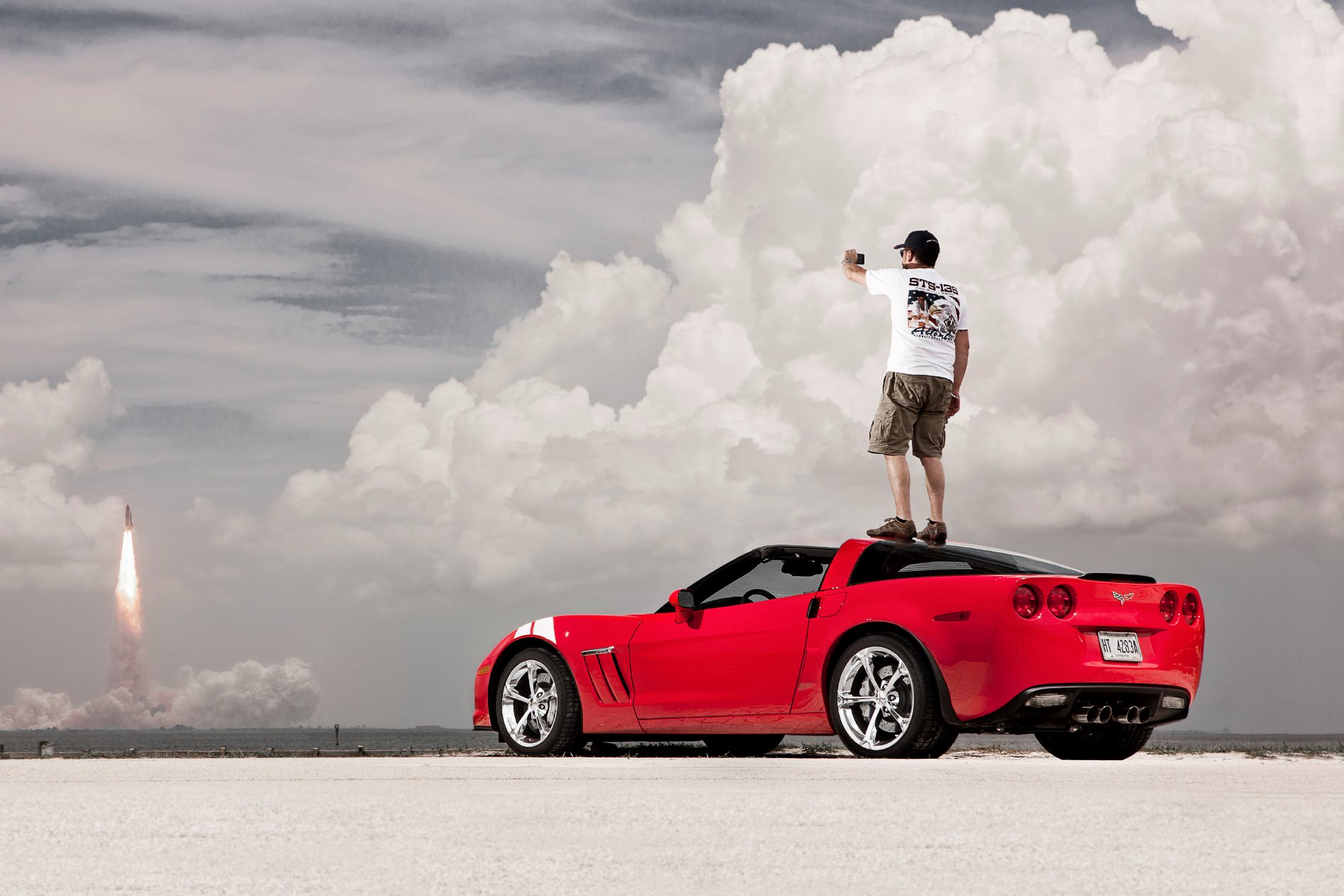Holden’s two-door pillarless coupe was a revelation for Australia, and one that’s proved to have enduring appeal among Aussie car fanatics. The Monaro GTS 327’s win at Bathurst in the same year – the first time that factory-supported Ford and Holden teams battled it out for V8-powered supremacy that sparked the rivalry that endures even today – certainly helped prove its muscle-car credentials.
We celebrate by going back to the Monaro’s first-ever road test, a review that set it on the path to the podium for the 1968 Wheels Car of the Year award.
We test the Monaro range and the husky Brougham
HOLDEN’S HOT ONES
In one bold move – predicted exclusively (and first) in WHEELS more than 18 months ago – GM-H hits the market with a one-two: lts own two-door super car and an answer to Ford’s hot-selling Fairlane.
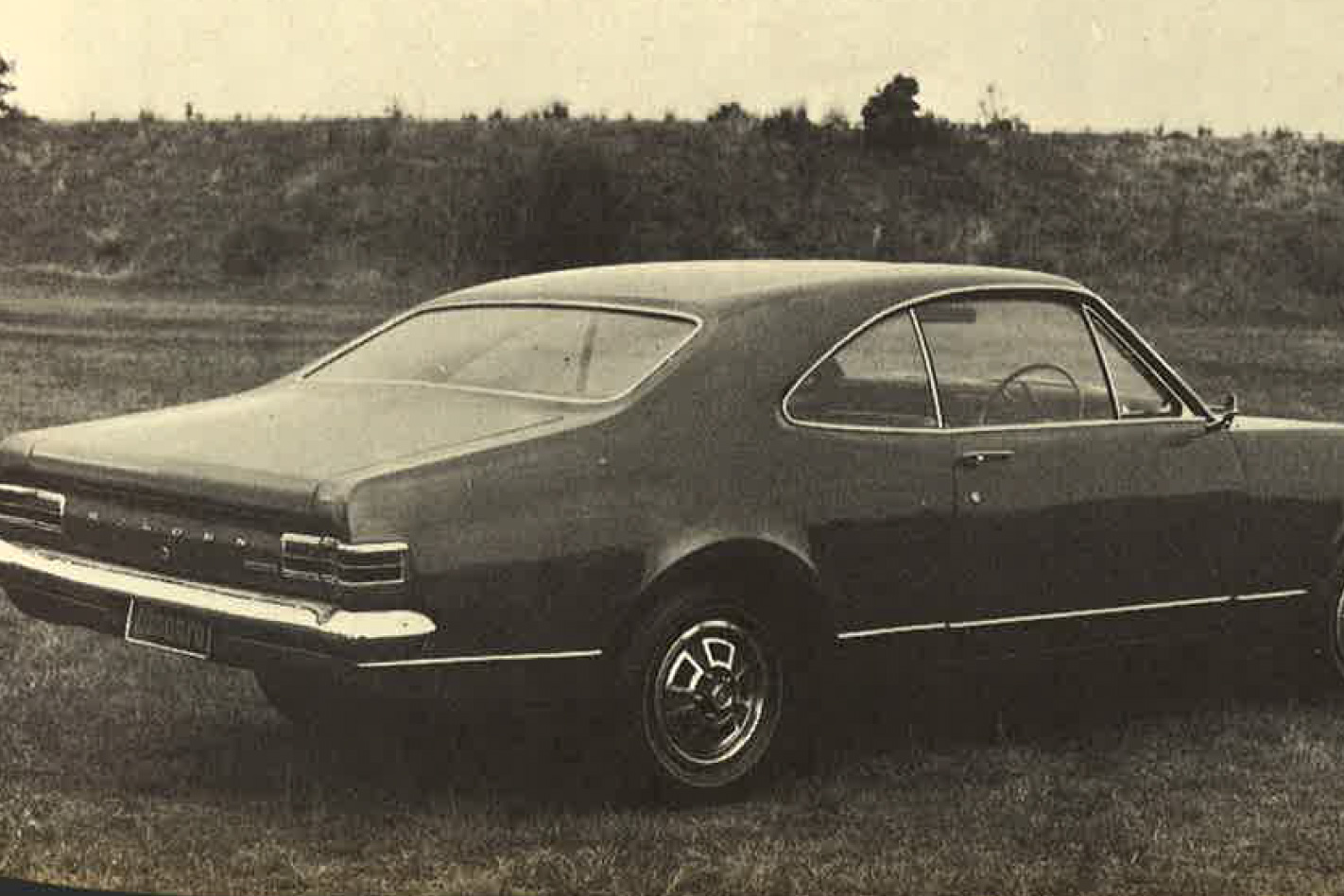
WITH predictable modesty the GM-H publicity boys have described the Monaro as a “shattering” car. And that’s about what it is. Though I might have thought twice about a word that conjures up pictures of boy racers wiping themselves off on telegraph poles.
Holden’s hot ones was first published in the September 1968 edition of Wheels magazine
At the very least, however, the car is startling. And if it follows current overseas (for overseas read US) trends it will sell as fast as it looks. Two-door, hardtop sporty cars are very IN over there and if it lives up to the promise it showed when we tested it a few weeks ago inside GM-H’s secret test track at Lang Lang near Melbourne it will do both.
The Monaro, the pillarless challenge to the Ford Falcon GT, comes in a bewildering combination of variations in line with the prevailing GM-H kick. It starts off with the bottom-of-the-line model with a 161 engine and drums all round turning out 114bhp and selling for $2500 or thereabouts. Prices were not announced when we went to press. From there it heaps option on option till you finally end up with the Genuine Article – the GTS “327”. It’s the top-of-the-line.
The ultimate. The absolute Monaro (that’s a native word for “the peak” or “‘high plane” or something pretty similar.) It is also the name of a mountain range near Canberra (political overtones?).
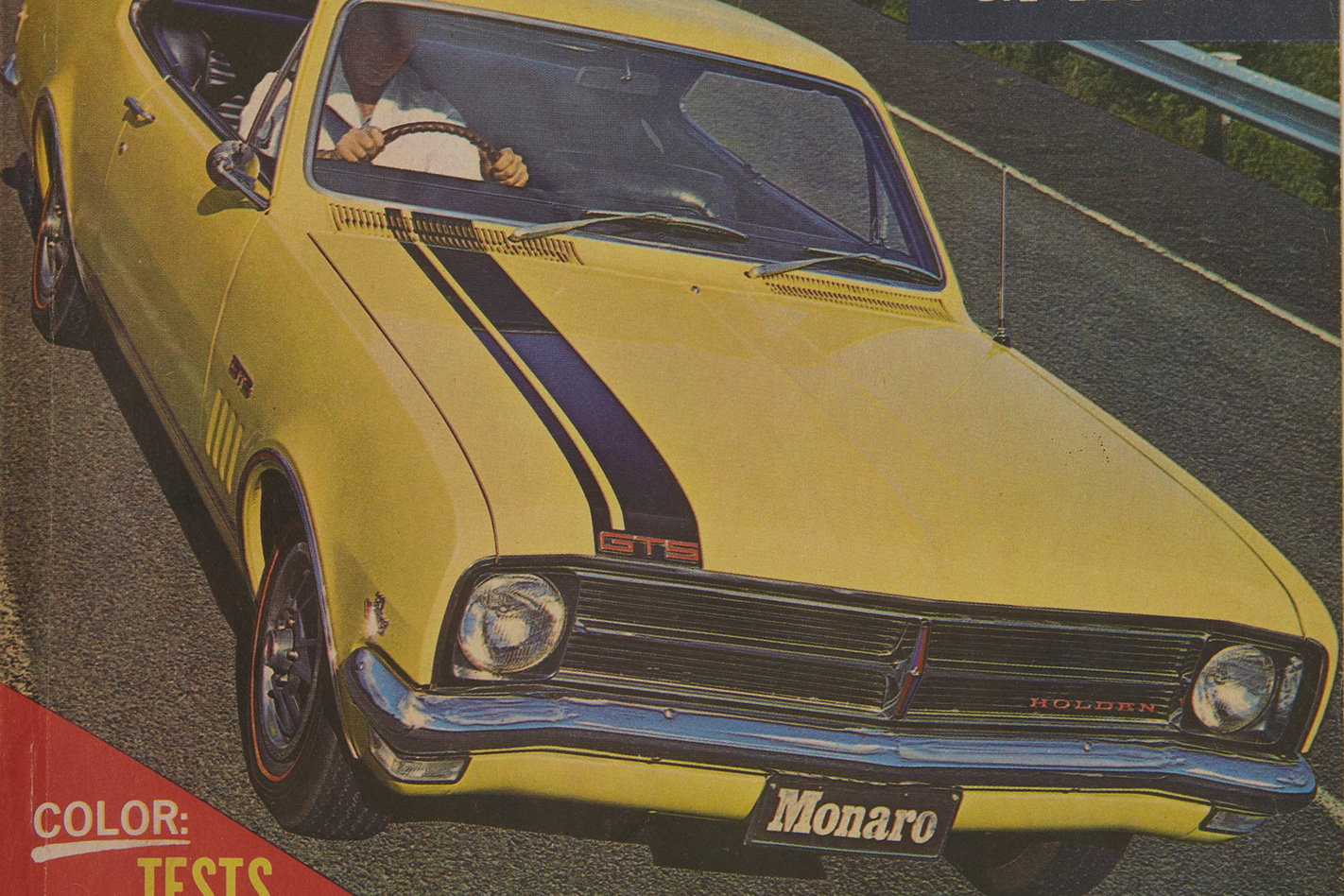
But it’s all car, man. And if it doesn’t give the Ford GTs the hurry-along at Bathurst some GM-H executives will be surprised.
GM-H calls it its “fun car” – and in some versions it certainly is (although the 161 is probably more likely the “funny car” of the troupe). But the mid-range machines, like the ones with the 186S “middle-of-the-line” engine, and the model which will probably be the big seller, definitely are. The 327 is definitely COMPETITION ORIENTATED.
It even sounds like it might be the young brother of Norm Beechey’s Camaro. Driving it the feeling is reinforced and you end up with a positive kinship with the latest addition to the super-car arena.
GM-H calls it “Australia’s first sports machine”. That may be a bit presumptuous but it certainly is sporty. And whether it will “drive you wild” (again the maker’s phrase) probably depends on how you drive it and the way you treat it.
It may not be all things to all drivers as GM-H hopes. But it comes pretty close. The basic 161-englned version is a good cheap buy for the family man who is still the terror or the tracks deep down inside there somewhere. It is economical (will probably give round 30 mpg at a 30 mph average) and the back seat is big enough for the kids and the boot is big enough for the family’s holiday luggage. Access to the back seat is adequate too – Unlike many other two-doors. The drum brakes are (again) adequate (and probably an advantage over discs in the country) and it even comes with a three-speed column change.
From then on you build your Monaro to suit your taste. On the hotter models the floor-mounted tacho is standard. But there is nothing to stop you ordering it on any of the seven basic versions.
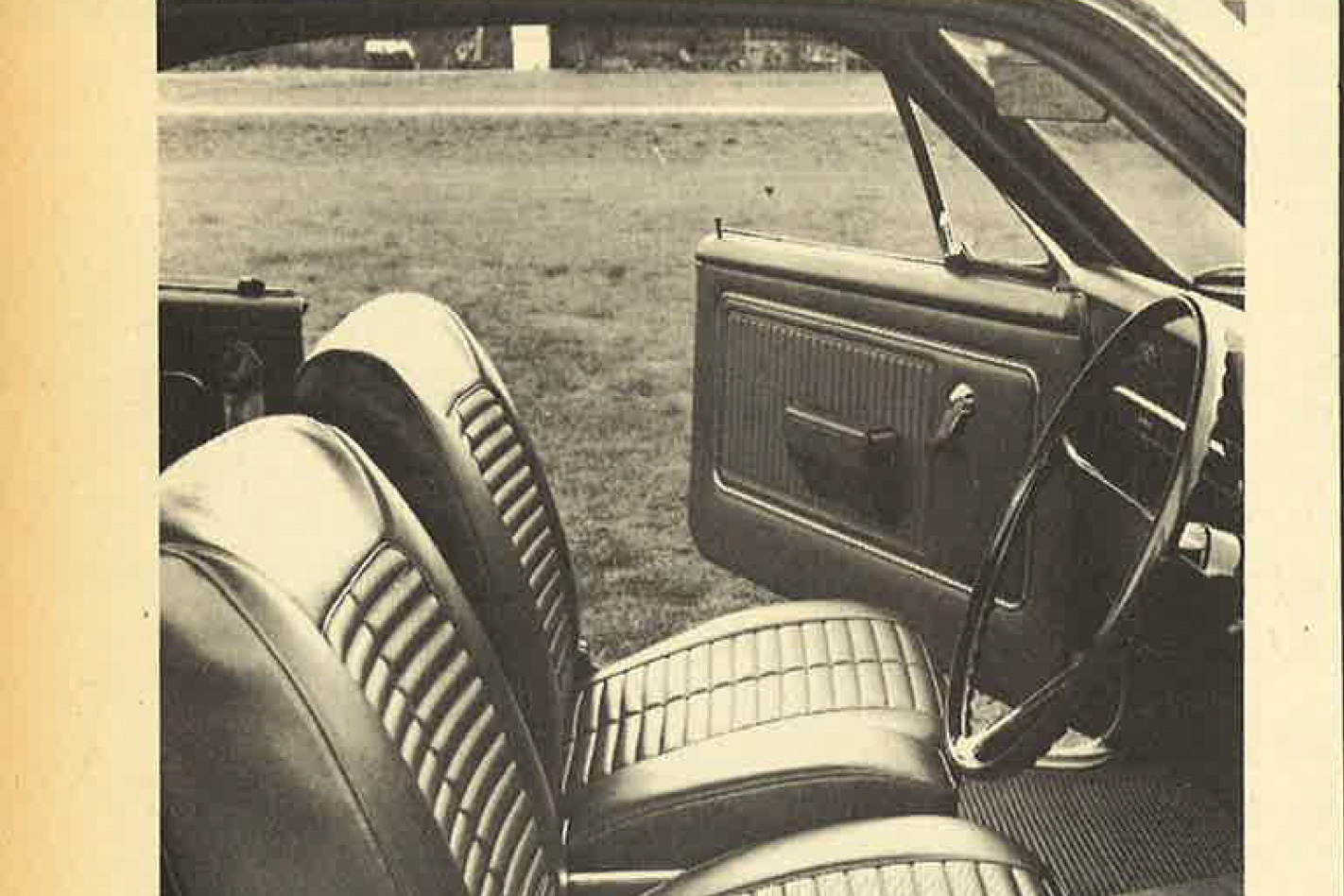
Gears can be manual or automatic, on the floor or on the column. Engines range from the 161 through the 186 (standard and “S”) to the 210 bhp V8 and the super-hot 250 bhp V8. As your engine goes up so does your fuel consumption, naturally.
The Monaro “186” engines gives 33 8 mpg at a steady 30 mph, the 327 in the GTS Monaro only 23.4. It’s a matter of not wanting to have your cake and eat it too and it’s all entirely up to you. Everything – almost – is optional. The “go faster” stripes come for no extra cost on the GTS Monaros. But if you feel they might embarrass you then the factory will delete them.
Standing quarter figures with the various engines were interesting.
Standing ¼ Engine1/2secmile GTS/ 32716.2 25.3 GTS/ 307 (4-speed manual) 18.028.3 GTS/ 307 (automatic)18.629.3 186S (4-speed manual)19.130.5 186 (3-speed manual)20.332.2
Top speed figures (mph) recorded were: GTS 327: 124.2 GTS 307: 109.6 GTS 307 (auto): 107.6 GTS 186S: 99.9 Monaro 186: 91.7
Figures from standstill to 60 mph varied from 8.4 secs for the red hot GTS 327 to almost 17 secs for the bottom-of- the-line 161. Handling varied considerably up through the range too. But the stick-with-itnessof the GTS 327 was eye-opening, thanks mainly to increased-rate front springs and special rear-axle radius rods. The latter will be a boon to the three GTS drivers in the London-to-Sydney Rally and won’t go amiss on the five that will probably contest the Hardie Ferodo 500 in October either.

But then, good handling is only to be expected in a car costing nearly $4000 and designed expressly to thrash the Falcon GT. It has been hinted that only about 250 of the exotic machines will be built – just enough to homologate the car for the Bathurst race. If this is so, and the car catches the Australian imagination as well as we predict, then the car could have an astonishing resale value. But then if it gets to that stage the General will probably churn out some more.
The GTS 327 uses the same mill that powers the Impala and the Parisienne. Its gearbox is a close ratio, manual four speed. It is manoeuvred via a stubby, floor-mounted tennis ball-sized, imitation walnut wood-grained shifter. The steering wheel on the GTS versions is also imitation wood with alloy spokes.
Six-inch wide wheels are standard but the choice of rubber is in a mind-boggling variety that includes D70 high-speed red band 7.35 nylons and four-ply blackwall rayon 6.95s. You can choose from a range of 12 tyres in the rubber department. Wide 600-14 “rally” wheels are also optional.

Rear axle ratios come in a choice too: 3.36 or 3.0B to 1. So do carbies. The 161 and 186 engines have a one-barrel downdraught Bendix Stromberg, the 1B6S a twin-barrel of the same, the 5-litre V8 a two-barrel Rochester and the 327 a four barrel Rochester. Fuel tank capacities vary also. Most hold 16.5 gallons. The 327, however, holds 25 – and needs it.
Facia is pretty well standard HK as are the inside door trim and control arrangements. Crash paddingeven in the 327 – is surprisingly minimal. Sun visors are pleasingly full width and fit around the wide, dippable rear vision mirror. Adjustable seats are options but the ones fitted to our Monaro were good in all respects except that you couldn’t recline them with the doors shut as the controls were too close to the door. The glove box is roomy with a fold-down lid that gives standing room for four glasses. There is also a giant cigarette box-cum-map container on the floor just behind the gear lever.
All in all – a mighty device. The General has excelled himself with this one. All he has to do now is sit back and hope the world-wide trend for two-door, pillarless hardtops will catch on in Australia …

